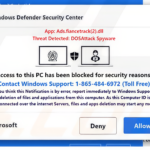How to Set Up a Python Virtual Environment in Visual Studio Code and Handle PowerShell Script Execution Errors
In this blog post, we’ll explore how to set up a Python virtual environment (venv) in Visual Studio Code (VSC) and address common PowerShell script execution errors that may arise…
How to Set Up Pi-hole for Network-wide Ad Blocking
In the digital era, where every online step seems to be accompanied by an array of ads, finding a peaceful corner on the internet can feel like a quest for…
Useful Command Prompt (cmd) Commands
Below is a table of useful command prompt command for all actions ranging from system management to viewing information to basically anything you would want to do from the command…
Demystifying Scareware: A Guide for the Everyday Internet User
In the vast expanse of the internet, where information and resources flow freely, lurks a less benign element aimed at exploiting the fears and uncertainties of everyday users. This element,…
Navigating the Digital Age: A Consumer’s Guide to Cybersecurity
In today’s world, where digital interactions and transactions have become the norm, the importance of cybersecurity cannot be overstated. For consumers, navigating the vast and sometimes perilous digital landscape can…
5 Tips to Staying Safe on the Internet
In the digital age, the internet has become an integral part of our daily lives, offering a vast repository of information and endless opportunities for communication, learning, and entertainment. However,…




